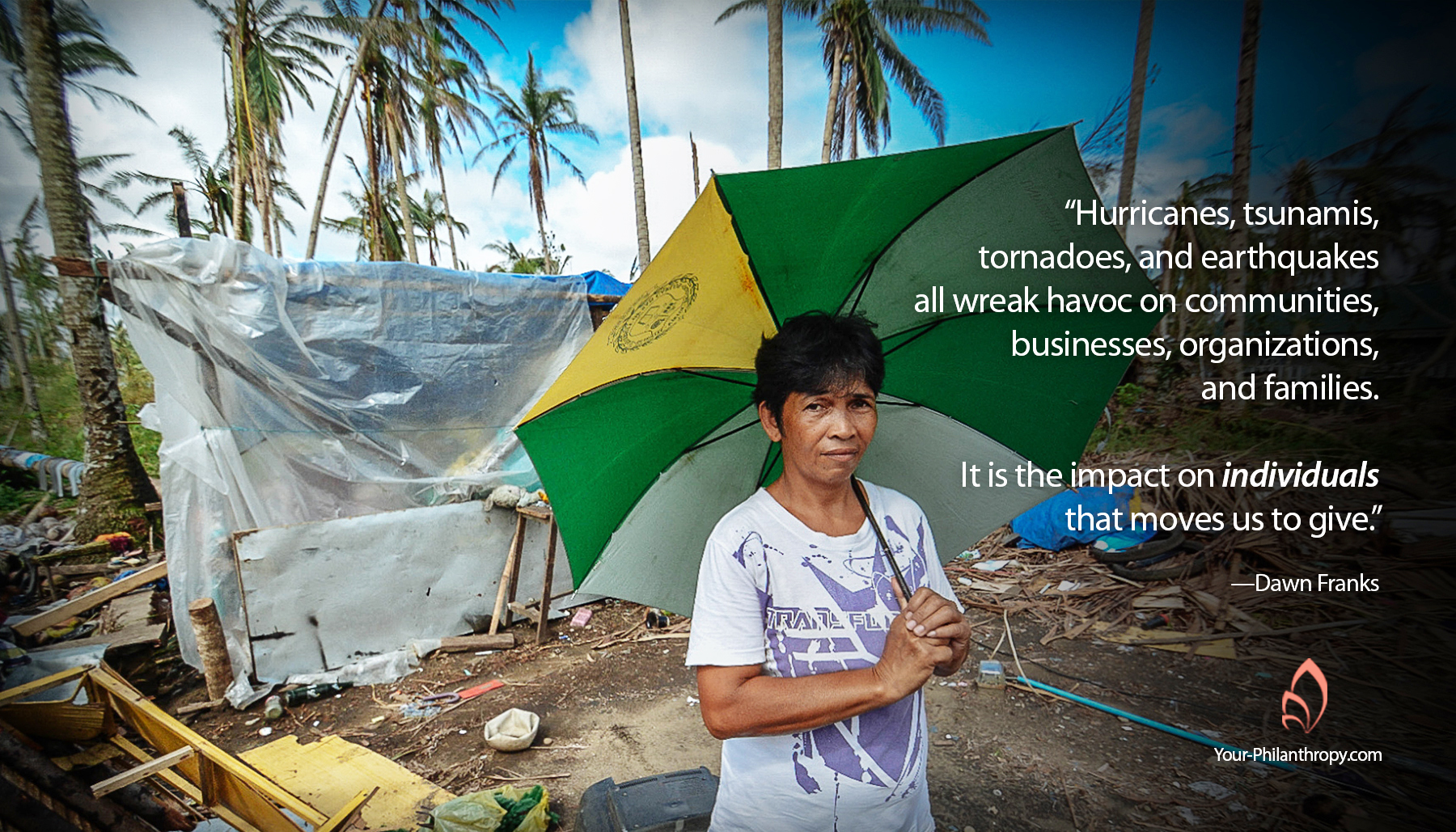We’re right in the middle of hurricane season. Whether it’s a storm in the Atlantic or the Eastern Pacific, August is pretty much the middle of the season. Every year around this time, and especially into September hurricane season seems the most threatening.
Perhaps it is because Hurricane Katrina hit August 29, 2005, and I live in a part of Texas that was a significant part of the disaster response. Last month Hurricane Barry threatened New Orleans and provided a critical test of the improved levees and floodgates. And even as the hurricane turned into a tropical storm, it still evoked serious concerns.
Hurricanes, tsunamis, tornadoes, and earthquakes all wreak havoc on communities, business, organizations, and families. It is the impact on individuals that moves us to give.
We find ourselves wanting to respond, to help in some way. Always the question is what’s the best way to help. And it is especially hard to know what to do when the disaster occurs in another country.
There are organizations like the American Red Cross or Samaritan’s Purse that respond all over the world. Their organizations are large, well equipped, experienced in disaster relief of all kinds and know how to deploy volunteers to make a difference.
Sometimes giving to the large national disaster relief organizations is exactly the right thing to do.
What about the local organizations located in the country experiencing the disaster? Since they are already a part of the community, they know and understand how to deal with customs, the challenges of low to moderate-income families, mom and pop businesses, schools, and places of faith. How can we safely contribute and improve their ability to serve the communities where they live and work?
Here are a couple of suggestions to check out
1. Disaster Accountability Project (DAP)
DAP operates SmartResponse.org, which identifies disasters worldwide and local organizations working to address the needs of the victims. Also, DAP provides long-term independent oversight of disaster management systems.
2. Center for Disaster Recovery (CDP)
Their tagline, “The when, where and how of informed disaster giving,” describes them well. They start with donors and focus their attention on strategies to increase donor impact “during domestic and global disasters and humanitarian crises.” Especially important: they have an emphasis on medium and long-term recovery. CDP manages various funds aimed at different kinds of disasters and areas of the worlds.
As donors, we want to be sure our gifts are what’s needed at the time, in the middle of the crisis, and for some of us, it’s important to address more long-term needs.
It will never be easy to respond to disasters from afar, but there are ways to do it well. How do you like to give to disaster relief? What’s important to you when you give to disasters in other countries? I’d love to hear your thoughts and experiences.
Like it? Use it. Share it. Comment below.


0 Comments